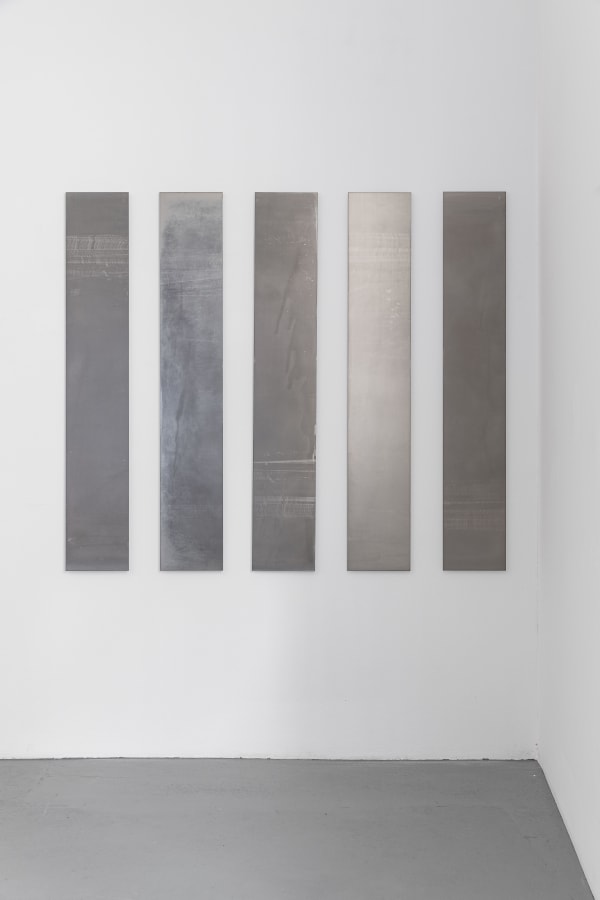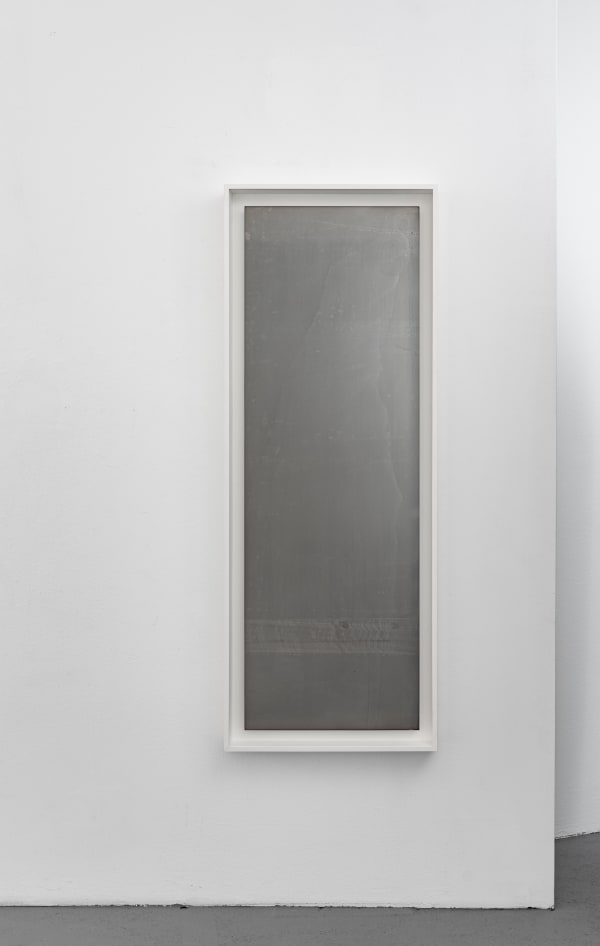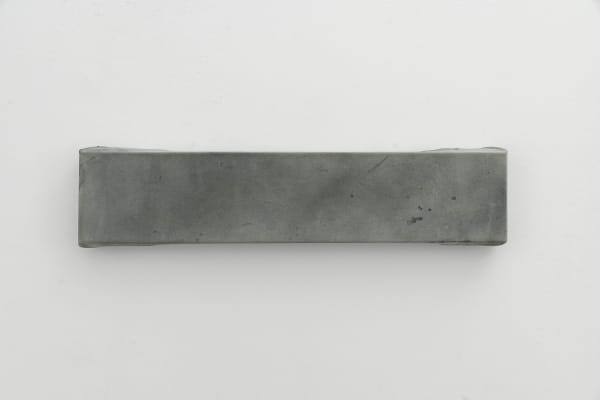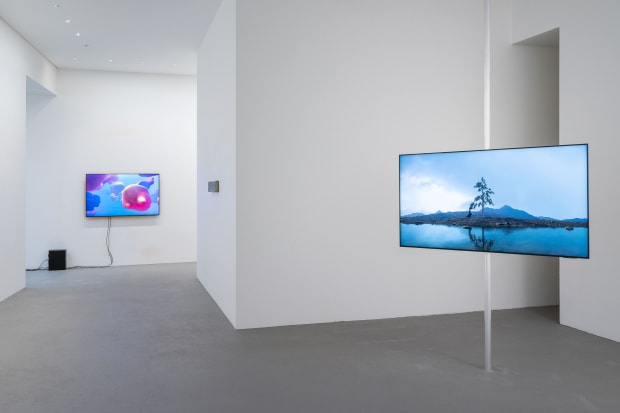
The exhibition title under the sun guides both metaphorically and literally through the work of artists Liz Deschenes, Rindon Johnson, and the collective Troika. On one hand the English idiom refers to our collective existence on planet Earth, which is currently confronted with numerous challenges. In the artists' works, this is reflected through an interest in socio-economic structures and their effects on nature. On the other hand, the title under the sun can also be taken literally: The sun generates light and energy, which the artists use as instruments and formative elements. The artists also share a common interest in physical processes and formal changes through exposure, heat, solar radiation or material resources that shape the environment of our existence under the sun.
This Viewing Room foregrounds the three individual artistic positions and offers an insight into the artists' work beyond the works in the exhibition. Please click on the works for further informations, texts and photos.

– Rindon Johnson
Photo: © Rindon Johnson
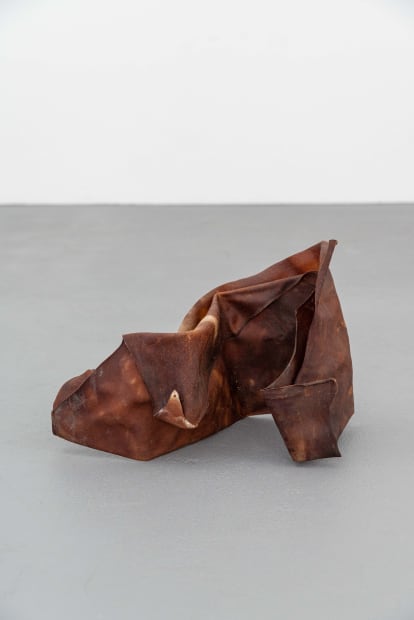
Rindon Johnson (*1990 in San Francisco, US, lives in Berlin, DE) is a multidisciplinary artist and author whose works are rooted in language and move between sculptural and virtual spheres. Johnson explores how physical and digital spaces are interwoven and how language shapes these realities by failing, contradicting, or empowering. Text is one of the numerous media that the artist appropriates and assembles into new combinations, raising the question of autonomy and power. In addition to his art publications, however, text is only visible in the form of the work titles, which resemble poems. Johnson examines the effects of capitalism, climate and technology and how we see and construct our personal realities. By combining word, technology and object, the artist creates multi-layered works. His forms of expression range from publishing, virtual and augmented reality to working with materials such as leather, wood and stone.

May the moon meet us apart, may the sun meet us together (2021) is an animated virtual reality film and part of the artist's "Nere Gar" series, which began in 2019. This is a series of speculative fictions that develop a new understanding of the sentience of plants and animals. Among the scientific breakthroughs within the artist's cinematic narratives is a novel species of limbless marine beings created by biotechnology, called "Bists". These beings swim peacefully underwater and decompose the microplastics flooding the planet. May the moon [...] shows a gathering of these aquatic beings and their gentle touches amonst each other, while the sun's rays shine through the surface of the water and one can hear the sound of the waves of the tides in the background. Johnson references highly intelligent octopods and their encounters in the sea in the behavior and appearance of the "Bists", also investigating the question of how beings deal with each other, how intimacy and trust arise. May the moon [...] shows scenes of desire and empathy, asking us to rethink our relationships with other non-human beings and to awaken thoughts of trans-human evolution.
Law of Large Numbers: Our Selves, Sculpture Center, New York (2022) | Photo: Kyle Knodell
"Ultimately, my materials, their provenance, and our mediated time together create virtual spaces while reflecting within the impacts of globalization, capitalism, the climate, desire, and 'new' technologies."
– Rindon Johnson
Video Rindon Johnson: Law of Large Numbers: Our Bodies, Sculpture Center (2021)
![Cambrian slippery wetness [...] (2021) is a sculpture made of leather, a material that Johnson repeatedly uses to refer to...](https://artlogic-res.cloudinary.com/w_620,h_620,c_limit,f_auto,fl_lossy,q_auto/ws-maxgoelitz/usr/images/feature_panels/image/items/f1/f1d9c3ac91304e979b7b14a7f1ee75d3/rindon-johnson_cambrian-slippery-wetness_2021_rjo5_dirk-tacke_web_3.jpg)
Cambrian slippery wetness [...] (2021) is a sculpture made of leather, a material that Johnson repeatedly uses to refer to various social issues. Acquired as a by-product of the meat industry, the artist treats the skins with various means, such as polyurethane, bleach, minerals and colored pencils, leaving them to the weather for months, which also leaves traces in the leather. By choosing this material, Johnson administers himself to the skins, referring through their presentation to the general submission, neglect and interchangeability of living beings in our time. The actual act of molting, a violent transgression of body boundaries, illustrates this form of objectification. With the leather works, Johnson emphasizes the recognition of the ability of animals to act and questions the ethics and sustainability of our profit-oriented interests in connection with animal products. At the same time, Cambrian slippery wetness [...] transfers these questions to identity-political and classist issues, as well as practices of racist exploitation.

Rindon Johnson's work has been shown in international exhibitions, most recently as a solo presentation at Sculpture Center in New York (2021), the Museum of American Art in Washington (2021) and the Julia Stoschek Collection in Düsseldorf (2019). Johnson has written several books, given lecture performances and readings, including at MoMa PS1 (2018) and KW in Berlin (2019), and published works and texts in collaboration with museums and magazines, such as the New York Times.
→ further information about the artist
Installation view CIRCUMSCRIBE, JSC Düsseldorf (2019) | Photo: Alwin Lay, Cologne
Rindon Johnson, Hand trained, Let the crossing be indicated to the state. He lost his jacket again and again, until there was no need for jackets a cool morning, the long train, I wanted it around the whole width of my body and got nothing, then something, then a big light, warm biceps and strangely a glide along the floor., 2021

"Depending on the day, the weather, the architecture, and the presence or absence of others in the gallery, each encounter with Deschenes' work is a unique experience that speaks to our fundamental desire to be transformed by art."
– Eva Respini, chief curator, Institute of Contemporary Art ICA, Boston
Liz Deschenes | Photo: Stephen Faught, Miguel Abreu Gallery, New York

Liz Deschenes (*1966) was born in Boston and lives and works in New York. She attended the Rhode Island School of Art and Design, where she initially enrolled in painting, but eventually switched to photography and graduated in 1988. In her artistic work, Deschenes confronts the assumptions surrounding photography as fixed image and extends this traditional view by experimenting with the medium’s properties and possibilities. Her unique photograms are camera-less, long-term exposures on light-sensitive paper. Deschenes also creates sculptural and architectural objects that incorporate both their surroundings and the viewer through reflections.
Installation view Luogo e Segni, Pinault Collection, Punta della Dogana, Venice (2019) | © Palazzo Grassi | Photo: Delfino Sisto Legnani, Marco Cappelletti

1898 - 1928 (2019) is a portrait-format photogram, mounted on an aluminum plate, which can simultaneously be understood as a photograph as well as a pictorial process. Liz Deschenes explores the material potential of photography by utilizing the elemental aspects of the medium: photo paper, light and chemicals. Deschene's time-consuming work process begins with exposing light-sensitive paper to the ambient light of the nighttime and subsequently washing and fixing it with silver toner. The resulting photograms bear fine, abstract traces of their creation process and, through their reflective surfaces, include both the viewer and the spatial context of their presentation. As the material continues to oxidize, the work slowly evolves over time. The exhibition space thus becomes a camera itself, which, depending on the incidence of light, co-determines the surface changes. Thus, 1898 - 1928 absorbs light and at the same time makes the material development of photography tangible. Deschenes also understands their photograms as an experience and inscription of space and time. In contrast to traditional photography, her photograms are no longer just a snapshot, but continuously absorb the influences of their surroundings.
- Liz Deschenes
Video: Luogo e Segni, Punta della Dogana, Venedig (2019)

The title FPS 30 (2018), a five-part photogram from the series of works of the same name, refers to the abbreviation "frame per second" and thus to the frame rate in the production of films. The artist refers to the early film pioneer Étienne-Jules Marey, who for the first time created the illusion of movement on rotating film strips with a specific camera technique. For Deschenes, the FPS series does not focus on depicting reality or creating an illusion, but on capturing the spatial and temporal dimension of movement. The artist reverses Marey's principle of the cinematic apparatus by fixing the photograms and the viewer moving in space. They appear as a fleeting image on the individual panels and mark the spatial and temporal level in Deschene's work. FPS 30 is also a record of the material conditions of its creation. Depending on the brightness during the exposure of the photosensitive paper and the intensity of chemical development, the structure of the surface changes. A mediating reality is replaced by the immediate reality of the photographic process. In addition to the mirror-like effect, the works hung next to each other reveal a highly individual sensitive surface on closer inspection: "It changes, it oxidizes, it catches handprints if handled. It is a sensitive, vulnerable material."

In 2019, parallel to the 58th Venice Biennale, Deschenes’s works were part of the exhibition ‘Luogo e segni’ at the Pinault Collection – Punta della Dogana. Major solo exhibitions have been presented at the ICA, Boston (2016); MASS MoCA, North Adams, Massachusetts (2015); the Walker Art Center, Minneapolis (2015); and Secession, Vienna (2012). Deschenes has been included in group exhibitions at the Musée d’Art Moderne, Paris (2016); the Whitney Museum of American Art, New York (2015); the Museum of Modern Art, New York (2014); Sprengel Museum Hannover, Germany (2021); and the Whitney Biennial, New York (2012).
→ further information about the artist
Installation view Institute of Contemporary Art ICA, Boston (2016) | Photo: Charles Mayer
Institute of Contemporary Art, Boston (2016) | Photo: Charles Mayer

– Troika
Photo: Studio Troika

Troika is a collaborative contemporary art group founded in 2003 by Eva Rucki (*1976, Germany), Conny Freyer (*1976, Germany), and Sebastien Noel (*1977, France). The artists live and work in London. With a particular interest in subjective and objective readings of reality and various relationships involving humans and technology, Troika examines how information is transmitted in the digital world and how it transitions into physical reality. Their works deal with different systems of representation and illustrate how technological progress and human reality influence each other.
Installation view No Sound of Water, Espacio Arte Abierto, Mexico City (2021) | Photo: Troika

Terminal Beach is an animated film depicting a futuristic end-time scenario in which an ape-like creature fells the supposedly last tree on Earth. With the help of motion capture, the movements of a person swinging an axe were recorded and transferred to a production robot arm with long dark hair. As a result, the robot generates an animalistic or humanoid appearance, conveying a strangely enraptured feeling.
In this scenery, the robot ends what humanity began a long time ago – the progressive destruction of our planet. The title Terminal Beach is a reference to J.G. Ballard's collection of science fiction short stories, which focuses on the bitter paradox that the extraordinary creative power of the human imagination is surpassed only by its ruthless destructive instinct.
No Sound of Water, Espacio Arte Abierto, Mexico City (2021) | Photo: Troika
- Troika
Video: No Sound of Water, Espacio Arte Abierto, Mexico City (2021)

Evolutionary Composite (2021) is part of a series of works in which Troika focuses on salt crystals as the driving force behind certain inventions and technologies, without which human civilization would not have developed in the way we know it. In the wall works, the collective juxtaposes two objects vital for human civilization: The oldest tool of mankind – a flint hand axe and a silicon wafer – are both used in the manufacturing of computers. Salt also plays an important role in the production of both, which has been refined as a material over the course of 3.3 million years. In light of this, it seems that salt, unto itself and by its own power, has continuously driven human progress. With Evolutionary Composite, Troika builds a bridge between the millions of years in which salt has been utilized as a tool for controlling and domesticating nature as well as changing our environment, and salt as a contributing factor to today's technological progress. At the same time, the works question the constant urge for growth, the status quo of modern life.

Troika's Light Drawings, including Fahrenheit 251 (2014) and Path of Least Resistance (2014) are created by electrical discharges burnt into the paper, leaving uncontrolled patterns in organic, branching forms. These traces evoke associations with rivers, blood vessels and plant roots – forms whose formations all go back to the same genetic law. The creation process of is beyond any control and is guided solely by the resistance of the material and the force acting upon it. The current follows the trail of least resistance to close its circle. Troika sets the starting point here – as in many of their works – and develops an aesthetic of unpredictability according to the principle of chance. At the same time, the Light Drawings capture the design of light and electricity, invisible per their nature, making their traces comprehensible and visible. Troika often resorts to scientific systems, whereby the repetition of under-energization is utilized here as a seemingly systematic cornerstone, permeating physical reality and its individual perception by coincidence.

Selected solo exhibitions have been presented at Espacio Arte Abierto in Mexico City (2021), Barbican Gallery in London (2019), NC Arte in Bogota (2015) und Daelim Museum in Seoul (2014). Troika’s cross-media works are part of the collections of the Center Pompidou, Paris; M+, Hong Kong; the Victoria & Albert Museum, London; the Art Institute of Chicago; the Museum of Modern Art, New York; Jumex Collection, Mexico City; and the Eretz Israel Museum, Tel Aviv. Troika realized three site-specific installations for the British Pavilion at World Exhibition 2010 Shanghai.
→ further information about the artists
Installation view Walk the Line: New Paths in Drawing, Kunstmuseum Wolfsburg (2015)




